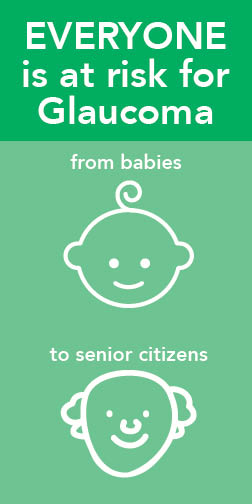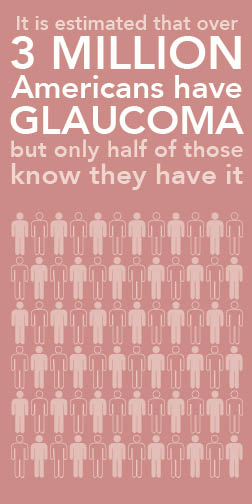What is Glaucoma?
It is a progressive disease of the optic nerve that is a leading cause of blindness in this country. Because early in the disease there are no symptoms, it is often referred to as “the sneak thief of sight.” In the majority of patients affected, the pressure inside the eye is elevated. Medical, surgical and laser treatments are available to lower the intraocular pressure and lower the risk of optic nerve damage. With early detection and treatment, vision loss and blindness can be prevented. The surgeons, doctors, and eye care professionals at McDonald Eye Associates, located in Fayetteville and Rogers, Arkansas, are specially trained and experienced in treating the several different stages of glaucoma.
What are the risk factors?
Elevated intraocular pressure, advancing age, African ancestry, family history, history of ocular injury, extreme nearsightedness and chronic use of corticosteroid medicines are the major risk factors. Diabetes and high blood pressure are minor risk factors.
What are the different types?
There are several different types, all of which have progressive optic nerve injury and visual field loss in common. Except for Normal Tension Glaucoma, all are associated with elevated intraocular pressure.
Types:
Closed Angle Glaucoma
Sudden closure of the drainage angle results in a rapid increase in pressure in the eye. Symptoms include severe eye pain, blurred vision, haloes around lights, nausea and vomiting. Treatment is needed immediately to minimize optic nerve damage. Angle closure glaucoma is usually treated with laser or microsurgery. Patients that are farsighted, especially those with cataracts or Asian ancestry are at risk.
Congenital Glaucoma
This rare type occurs in infants due to incomplete formation of the drainage channels in the eye during the prenatal period. Medication and surgery can also help.
Exfoliative Glaucoma
This common type of secondary glaucoma is due to clogging of the drainage channels by an abnormal white substance that is deposited throughout the eye. Elevated intraocular pressure is treated with medication, laser or surgery.
Glaucoma Suspect
This diagnosis refers to patients believed to be at high risk for developing glaucoma or in whom glaucoma is suspected but cannot be confirmed. A person may be considered a suspect on the basis of high intraocular pressure, a suspicious appearance of the optic nerve or visual field, or the presence of risk factors.
Normal Tension Glaucoma
Characteristic optic nerve damage and visual field loss occur at pressures within the normal range. Studies have confirmed that lowering pressures further with medications, laser or filtering surgery results in a lower risk of disease progression.
Open Angle Glaucoma
The most common type of chronic glaucoma, in which the intraocular pressure is high but the drainage angle is open and normal in appearance. Elevated pressure in the eye damages the optic nerve and results in permanent vision loss. OAG can be treated with eye drop and oral medications, laser and filtering surgery.
Pigmentary Glaucoma
A form of secondary glaucoma, it occurs when pigment granules from the iris (the colored part of the eye) are rubbed off and clog the drainage channels in the eye, causing the pressure to rise. Medication, laser or surgery may be used for treatment.
Secondary Glaucoma
This type occurs as a result of an eye injury, inflammation, tumor, cataracts, diabetes or vascular disease. Sometimes, medications such as steroids can even be a cause. Treatment is directed toward both the underlying problem as well as lowering pressure with standard glaucoma therapies.




